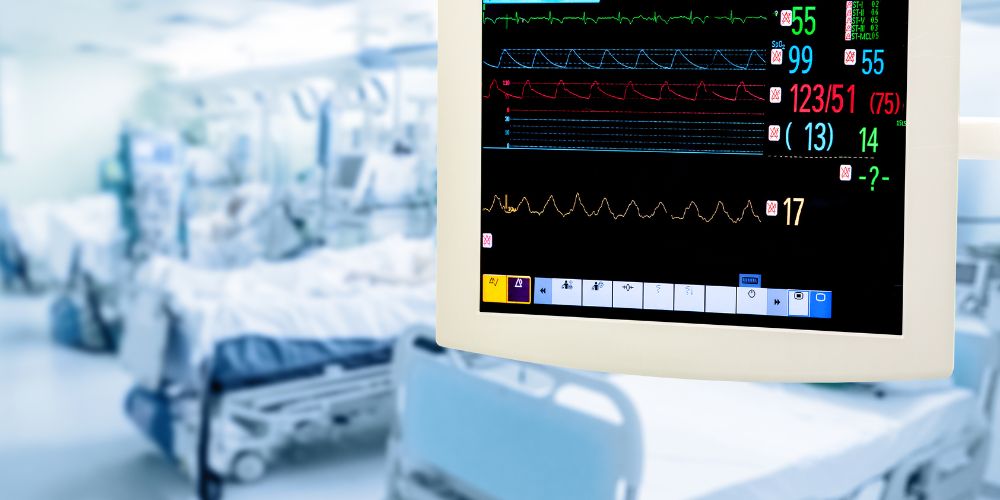Overview
Learn about the various contraction kinds and how they are measured if you wish to be able to interpret a contraction monitor. Understanding the distinction between Braxton Hicks contractions and actual labor contractions is crucial.
Additionally, you need to understand how to interpret the data and the measurement units used in contraction monitoring. The accuracy of contraction monitoring can be impacted by a variety of variables, including drugs, fetal position, and maternal activity level.
How to Read Contraction Monitor
Fetal monitoring during labor and delivery includes monitoring of contractions, which is crucial. It aids medical professionals in determining whether the uterus is correctly contracting and whether the baby is tolerating labor. The following are the elements you need to be aware of in order to interpret a contraction monitor:
Different types of contractions
True labor contractions and Braxton Hicks symptoms. Practice contractions are another name for Braxton Hicks contractions. They are erratic and do not enlarge the cervix. True labor contractions occur frequently and progressively get stronger. The cervix enlarges, effaces, or thins as a result of them.

Braxton Hicks vs. true labor contractions
Knowing the difference between Braxton Hicks and actual labor contractions is crucial. Timing the contractions is one method to achieve this. They are probably Braxton Hicks contractions if they are irregular and do not get stronger over time.
They are probably real labor contractions if they are regular, get stronger over time, and are followed by other labor-related symptoms, including cervical dilatation or bleeding.
Units of measurement used in contraction monitoring
The frequency and length of contractions are monitored during contractions. The duration is measured in seconds, whereas the frequency is measured in contractions per minute. A contraction lasting 60 seconds and occurring every 3 minutes, for instance, would be recorded as 1:3.
Possible Risks of Inaccurate Contraction Monitoring
Delayed diagnosis of labor
The diagnosis of labor may take longer if the monitoring is inaccurate. This may delay the provision of necessary care, such as the delivery of drugs to speed up labor.
Fetal distress
An inability to recognize fetal distress can result from inaccurate monitoring. Fetal distress, which can result in a number of issues like brain damage or stillbirth, can happen when the baby is not getting enough oxygen throughout pregnancy.
Unnecessary interventions
Inadequate monitoring may result in unneeded interventions like cesarean delivery or labor induction. These procedures have potential hazards of their own, including infection, hemorrhage, and protracted healing.
Inadequate pain management
Inadequate pain treatment may result from inaccurate monitoring. The medical professional might not be able to manage the mother’s pain effectively if the contractions are not being precisely tracked, which might exacerbate her worry and discomfort.
FAQs
1. How is contraction monitoring performed?
Contraction monitoring is typically performed using an external tocodynamometer, which measures the frequency and duration of contractions. In some cases, an internal monitor may be used, which is placed inside the uterus.

2. Is contraction monitoring painful?
Contraction monitoring itself is not painful, but the pressure from the tocodynamometer can be uncomfortable for some women.
3. Can contraction monitoring be done at home?
Contraction monitoring is typically performed in a hospital or birth center. However, some women may be instructed to perform at-home monitoring if they are at risk for preterm labor.
4. What should I do if I have concerns about my contraction monitoring?
If you have concerns about the accuracy or interpretation of your contraction monitoring, it’s important to discuss them with your healthcare provider. They can answer any questions you have and provide reassurance or make any necessary adjustments to your care plan.
Conclusion
Fetal monitoring during labor and delivery depends on being able to read a contraction monitor.
Understanding the units of measurement used in contraction monitoring, recognizing the differences between Braxton Hicks and actual labor contractions, and being aware of the variables that may alter the accuracy of monitoring are all necessary.
Several dangers, including a delayed identification of labor, fetal discomfort, needless interventions, and insufficient pain treatment, can result from inaccurate monitoring, which could affect both the woman and the child.



